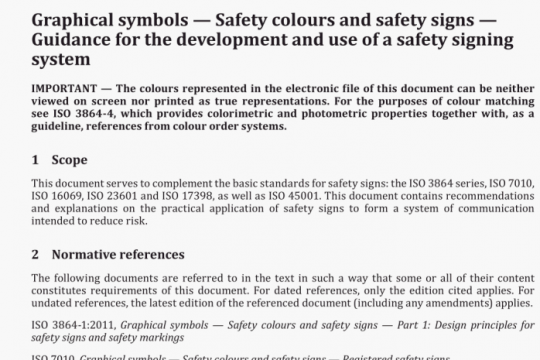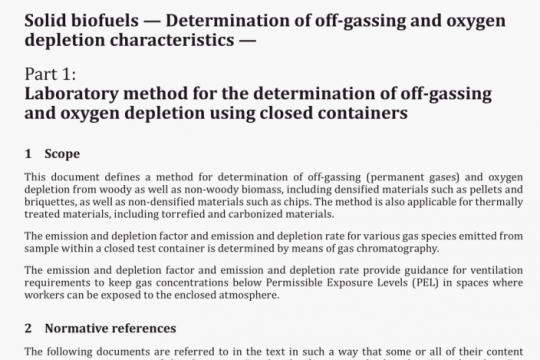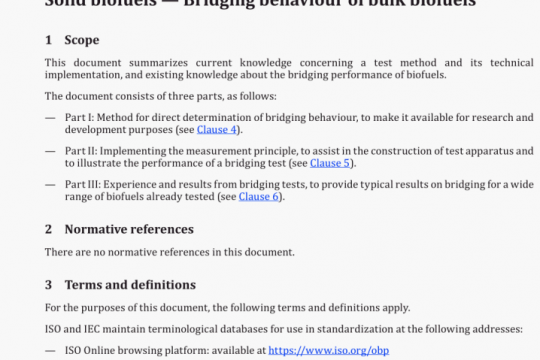ISO 3262-1 pdf free download
ISO 3262-1-2020 pdf free download.Extenders – Specifications and methods of test- Part 1: Introduction and general test methods.
5.3 Determination of calcium and magnesium contents
5.3.1 Reagents
During the analysis, use only reagents of recognized analytical grade and only water of at least grade 3 purity as defined in Iso 3696.
5.3.1.1 Hydrochloric acid, CAS-No 7647-01-0, c(HCI) = 6 mol/l.
5.3.1.2 Ammonia solution, CAS-No 1336-21-6. approximately 32 % (mass portion), p approximately
0.880 g/ml.
5.3.1.3 Potassium hydroxide solution, CAS-No 13 10-58-3, c(KOH) = 4 mol/l.
5.3.1.4 Ammoniurn chloride, CAS-No 12 125-02-9.
5.3.1.5 Sodium chloride, CAS-No 7647-14-5.
5.3.1.6 EDTA, standard volumetric solution, CAS-No 60-00-4, c(EDTA) = 0,05 mol/l.
Dissolve 18,612 6 g of disodium ehylenediamine tetraacetate dihydrate (EDTA disodium salt) in water in a 1 000 ml one-mark volumetric flask, dilute to the mark and mix well. Standardize the solution against a standard magnesium solution, using the procedure described in 5.3.3.3.
5.3,1.7 Calcon’) Indicator, (or other appropriate indicator).
Grind 1 part of Calcon, CAS-No 2538-85-4, with 99 parts of anhydrous sodium sulfate, CAS-No 7757-82- 6, to a fine powder.
5.3.1.8 Mordant black II (Eriochrome black T)2) (or other appropriate indicator).
Grind 1 part of Mordant black II, CAS-No 1787-61-7, with 99 parts of sodium chloride, CAS-No 7647-14-
5. to a fine powder.
5.3.1.9 Indicator paper, p1-I 9,5 to pH 13.
1) Calcon is a registered trade name for sodium-1-(2-hydroxy-1.naphthylazo).2-naphthyl-4-sulfonate. This information Is given for the convenience of users of this document and does not constitute an endorsement by ISO of the product named.
2) Mordant black II and Erlochrome black T are registered trade names For sodium-1-(1-hydroxy-2- naphthylazo)-6-nitronaphthalene-4-sulfonatc. This information is given for the convenience of users of this document and does not constitute an endorsement by ISO of the product named.5.3.2 Apparatus
Use ordinary laboratory apparatus and glassware complying with the requirements of ISO 385, Iso 648, ISO 1042 and ISO 3819.
5.3.3 Procedure
5.3.3.1 Preparation of filtrate
Weigh, to the nearest 0,1 mg, about 0,5 g of the test sample, previously dried in accordance with ISO 787-2, into a beaker. Moisten with a little water, add 7 ml of the hydrochloric acid (5.3.1.1), cover the beaker with a watch glass and boil for few minutes until dissolution is complete. Dilute to 100 ml.
Add 3 g of the ammonium chloride (i1.4) and neutralize with ammonia solution (5.3.1.2). Then add 1 ml excess of the ammonia solution to precipitate iron and aluminium. Boil, filter rapidly, and wash the precipitate with hot water. Collect the filtrate and washings, acidify slightly, and dilute to 500 ml in a one-mark volumetric flask.
5.3.3.2 Determination of calcium content
5.3.3.2.1 Titration
By means of a pipette, transfer 100 ml of the filtrate obtained in 5.3.3.1 to a 400 ml beaker. Dilute to about 250 ml, and add approximately 10 ml of the potassium hydroxide solution (5.3.1.3) in order to obtain a pH value of between 12 and 13. Add 0,2 g to 0,4 g of the Calcon indicator (5.3.1.7). If the calcium carbonate content of pure calcium carbonate is being determined, add a small amount of a soluble magnesium salt at this stage to intensify the colour of the solution during the subsequent titration.
Titrate with the EDTA solution (5.3.1.6) with constant stirring until the colour changes from wine-red to clear blue. Record the volume of EDTA solution used (V,).ISO 3262-1 pdf download.




